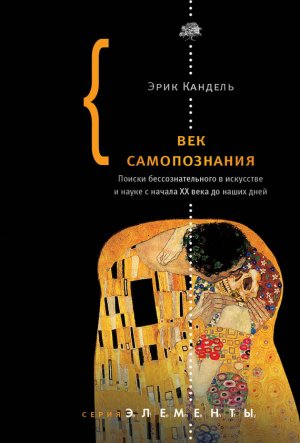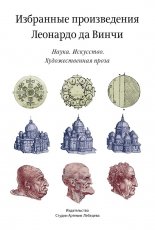┬ňŕ ˝Óýţ´ţšÝÓÝŔ . ¤ţŔ˝ŕŔ ßň˝˝ţšÝÓ˛ňŰŘÝţŃţ Ô Ŕ˝ŕˇ˝˝˛Ôň Ŕ ÝÓˇŕň ˝ ÝÓ¸ÓŰÓ XX ÔňŕÓ ńţ ÝÓ°Ŕ§ ńÝňÚ ╩ÓÝńňŰŘ ŢŔŕ

Zeki, S. Splendors andáMiseries ofátheáBrain. Oxford: Wiley-Blackwell, 2008.
Adolphs, R., Tranel, D., andáA.áR. Damasio Impaired recognition ofáemotion ináfacial expression, following bilateral damage toátheáhuman amygdala // Nature 372 (1994): 669ľ672.
Adolphs, R., Gosselin, F., Buchanan, T. W., Tranel, D., Schyns, P., andáA. Damasio Aámechanism foráimpaired fear recognition after amygdala damage // Nature 433 (2005): 68ľ72.
Anderson, A. K., andáE.áA. Phelps Expression without recognition: Contributions ofátheáhuman amygdala toáemotional communication // Psychological Science 11 (2) 2000: 106ľ111.
Arnold, M.áB. Emotion andáPersonality. NewáYork: Columbia University Press, 1960.
Barzun, J. AáStroll with James. Chicago: University ofáChicago Press, 2002.
Boring, E.áG. AáHistory ofáExperimental Psychology. NewáYork: Appleton-Century-Crofts, 1950.
Bradley, M. M., Greenwald, M. K., Petry, M. C., andáP.áJ. Lang Remembering pictures: Pleasure andáarousal inámemory // Journal ofáExperimental Psychology: Learning, Memory, andáCognition 18 (1992): 379ľ390.
Cannon, W.áB. Bodily Changes ináPain, Hunger, Fear, andáRage: AnáAccount ofáRecent Researches into theáFunction ofáEmotional Excitement. NewáYork: D. Appleton & Co., 1915.
Cardinal, R. N., Parkinson, J. A., Hall, J., andáB.áJ. Everitt Emotion andámotivation: Theárole ofátheáamygdala, ventral striatum, andáprefrontal cortex // Neuroscience andáBiobehavioral Reviews 26 (2002): 321ľ352.
Craig, A.áD. Howádo you feeláľ now? Theáanterior insula andáhuman awareness // National Review ofáNeuroscience 10 (1) 2009: 59ľ70.
Critchley, H. D., Wiens, S., Rotshtein, P., hman, A., andáR.áJ. Dolan Neural systems supporting interoceptive awareness // Nature Neuroscience 7 (2004): 189ľ195.
Damasio, A. Descartesĺ Error: Emotion, Reason, andátheáHuman Brain. NewáYork: G.áP. Putnamĺs Sons, 1994.
Damasio, A. Theásomatic marker hypothesis andátheápossible functions ofátheáprefrontal cortex // Proceedings ofátheáRoyal Society ofáLondon B 351 (1996): 1413ľ1420.
Damasio, A. TheáFeeling ofáWhat Happens: Body andáEmotion inátheáMaking ofáConsciousness. NewáYork: Harcourt Brace, 1999.
Darwin, C. TheáExpression ofátheáEmotions ináMan andáAnimals. London: John Murray, 1872.
Etkin, A., Klemenhagen, K. C., Dudman, J. T., Rogan, M. T., Hen, R., Kandel, E., andáJ. Hirsch Individual differences inátrait anxiety predict theáresponse ofátheábasolateral amygdala toáunconsciously processed fearful faces // Neuron 44 (2004): 1043ľ1055.
Freud, S. TheáUnconsious. London: Penguin Books, 1915.
Frijda, N.áH. Emotion experience // Cognition andáAttention 19 (2005): 473ľ498.
Frith, C. Making Up theáMind: How theáBrain Creates Our Mental World. Malden, MA: Blackwell Publishing, 2007.
Harrison, N. A., Gray, M. A., Gienoros, P. S., andáH.áD. Critchley Theáembodiment ofáemotional feeling inátheábrain // Journal ofáNeuroscience 30 (38) 2010: 12878ľ12884.
Iverson, S., Kupfermann, I., andáE.áR. Kandel Emotional States andáFeelings / In: Principles ofáNeural Science. 4th ed. E.áR. Kandel, J.áH. Schwartz, T. Jessell, eds. NewáYork: McGraw-Hill, 2000. Pp. 982ľ997.
James, W. What isáanáemotion? // Mind 9 (1884): 188ľ205.
James, W. Principles ofáPsychology. Vols. 1, 2. Mineola, NY: Dover Publications, 1890.
Kandel, E. InáSearch ofáMemory. TheáEmergence ofáaáNew Science ofáMind. NewáYork: W.áW. Norton, 2006.
Klver, H., andáP.áC. Bucy Preliminary analysis ofáfunctions ofátheátemporal lobes inámonkeys // Archives ofáNeurology andáPsychiatry 42 (6) 1939: 979ľ1000.
Knutson, B., Delgado, M., andáP. Phillips Representation ofáSubjective Value inátheáStriatum / In: Neuroeconomics: Decision Making andátheáBrain. P. Glimcher, C. Camerer, E. Fehr, R. Poldrack, eds. London: Academic Press, 2008. Ch.á25.
Lang, P.áJ. Theávarieties ofáemotional experience: Aámeditation onáJames-Lange theory // Psychological Review 101 (1994): 211ľ221.
LeDoux, J. TheáEmotional Brain: TheáMysterious Underpinning ofáEmotional Life. NewáYork: Simon andáSchuster, 1996.
Miller, E. K., andáJ.áD. Cohen Anáintegrative theory ofáprefrontal cortex function // Annual Review ofáNeuroscience 24 (2001): 167ľ202.
Oatley, K. Emotions: AáBrief History. Oxford: Blackwell Publishing, 2004.
Phelps, E.áA. Emotion andácognition: Insights from studies ofátheáhuman amygdale // Annual Review ofáPsychology 57 (2006): 27ľ53.
Rokitansky, C. vonáHandbuch derápathologischen Anatomie. Braumller & Seidel, 1846.
Rolls, E.áT. Emotion Explained. NewáYork: Oxford University Press, 2005.
Salzman, C. D., andáS. Fusi Emotion, cognition, andámental state representation ináamygdala andáprefrontal cortex // Annual Review ofáNeuroscience 33 (2010): 173ľ202.
Schachter, S., andáJ.áE. Singer Cognitive, social, andáphysiological determinants ofáemotional states // Psychological Review 69 (1962): 379ľ399.
Vuilleumier, P., Richardson, M. P., Armory, J. L., Driver, J., andáR.áJ. Dolan Distant influences ofáamygdala lesion onávisual cortical activation during emotional face processing // Nature Neuroscience 7 (2004): 1271ľ1278.
Weiskrantz, L. Behavioral changes associated with ablation ofátheáamygdaloid complex inámonkeys // Journal ofáComparative Physiological Psychology 49 (1956): 381ľ391.
Whalen, P. J., Kagan, J., Cook, R. G., Davis, C., Kim, H., Polis, S., McLaren, D. G., Somerville, L. H., McLean, A. A., Maxwell, J. S., andáT. Johnston Human amygdala responsivity toámasked fearful eye whites // Science 306 (2004): 2061.
Whitehead, A.áN. Science andátheáModern World. NewáYork: Macmillan, 1925.
Wurtz, R. H., andáE.áR. Kandel Construction ofátheáVisual Image / In: Principles ofáNeural Science. 4th ed. E.áR. Kandel, J.áH. Schwartz, T. Jessell, eds. NewáYork: McGraw-Hill, 2000. Pp. 492ľ506.
Amodio, D. M., andáC.áD. Frith Meeting ofáminds: Theámedial frontal cortex andásocial cognition // National Review ofáNeuroscience 7 (4) 2006: 268ľ277.
Anderson, A. K., andáE.áA. Phelps Isátheáhuman amygdala critical forátheásubjective experience ofáemotion? Evidence ofádispositional affect inápatients with amygdala lesions // Journal ofáCognitive Neuroscience 14 (2002): 709ľ720.
Anderson, S. W., Bechara, A., Damascott, T. D., andáA.áR. Damasio Impairment ofásocial andámoral behavior related toáearly damage inátheáhuman prefrontal cortex // Nature Neuroscience 2 (1999): 1032ľ1037.
Berridge, K. C., andáM.áL. Kringelbach Effective neuroscience ofápleasure: Rewards ináhumans andáanimals // Psychopharmacology 199 (2008): 457ľ480.
Breiter, H. C., Aharon, I., andáD. Kahneman Functional imaging ofáneural responses toáexpectancy andáexperience ofámonetary gains andálosses // Neuron 30 (2001): 619ľ639.
Breiter, H. C., Gollub, R. L., andáR.áM. Weisskoff Acute effects ofácocaine onáhuman brain activity andáemotion // Neuron 19 (1997): 591ľ611.
Cardinal, R., Parkinson, J., Hall, J., andáB. Everitt Emotion andámotivation: Theárole ofátheáamygdala, ventral striatum, andáprefrontal cortex // Neuroscience andáBiobehavioral Reviews 26 (2002): 321ľ352.
Churchland, P.áS. Brain-Wise: Studies ináNeurophysiology. Cambridge, MA: MITáPress, 2002.
Colby, C., andáC. Olson TheáOrganization ofáCognition / In: Principles ofáNeural Science. 5th ed. E.áR. Kandel, J.áH. Schwartz, T. Jessell, S. Siegelbaum, J.áH. Hudspeth, eds. NewáYork: McGraw-Hill, 2012. Ch.á18.
Damasio, A. Theásomatic marker hypothesis andátheápossible functions ofátheáprefrontal cortex // Proceedings ofátheáRoyal Society ofáLondon B 351 (1996): 1413ľ1420.
Damasio, H., Grabowski, T., Frank, R., Galaburda, A. M., andáA.áR. Damasio Theáreturn ofáPhineas Gage: Clues about theábrain from theáskull ofáaáfamous patient // Science 254 (5162) 1994: 1102ľ1105.
Darwin, C. TheáExpression ofátheáEmotions ináMan andáAnimals. NewáYork: Appleton-Century-Crofts, 1872.
Delgado, M. Reward-related responses inátheáhuman striatum // Annals ofáNewáYork Academy ofáScience 1104 (2007): 70ľ88.
Foot, P. Theáproblem ofáabortion andátheádoctrine ofádouble effect // Oxford Review 5 (1967): 5ľ15.
Freud, S. TheáUnconscious. London: Penguin Books, 1915.
Frijda, N.áH. Emotion experience // Cognition andáAttention 19 (2005): 473ľ498.
Fuster, J.áM. TheáPrefrontal Cortex. 4th ed. London: Academic Press, 2008.
Greene, J.áD. Whyáare VMPFC patients more utilitarian? Aádual-process theory ofámoral judgment explains // Trends ináCognitive Sciences 11 (8) 2007: 322ľ323.
Greene, J.áD. Dual-process morality andátheápersonal/impersonal distinction: Aáreply toáMcGuire, Langdon, Coltheart, andáMackenzie // Journal ofáExperimental Social Psychology 45 (3) 2009: 581ľ584.
Greene, J. D., Nystrom, L. E., Engell, A. D., Darley, J. M., andáJ.áD. Cohen Theáneural bases ofácognitive conflict andácontrol inámoral judgment // Neuron 44 (2004): 389ľ400.
Greene, J. D., andáJ.áM. Paxton Patterns ofáneural activity associated with honest andádishonest moral decisions // Proceedings ofátheáNational Academy ofáSciences USA 106 (30) 2009: 12506ľ12511.
James, W. TheáPrinciples ofáPsychology. Cambridge, MA, andáLondon: Harvard University Press, 1890.
Knutson, B., Delgado, M., andáP. Phillips Representation ofáSubjective Value inátheáStriatum / In: Neuroeconomics: Decision Making andátheáBrain. P. Glimcher, C. Camerer, E. Fehr, R. Poldrack, eds. London: Academic Press, 2008. Ch.á25.
Lang, P.áJ. Theávarieties ofáemotional experience: Aámeditation onáJamesáľ Lange theory // Psychological Review 101 (104): 211ľ221.
LeDoux, J. TheáEmotional Brain: TheáMysterious Underpinnings ofáEmotional Life. NewáYork: Simon andáSchuster, 1996.
MacMillan, M. AnáOdd Kind ofáFame. Stories ofáPhineas Gage. Cambridge, MA: MITáPress, Bradford Books, 2000.
Mayberg, H. S., Brannan, S. K., Mahurin, R., Jerabek, P., Brickman, J., Tekell, J. L., Silva, J. A., andáS. McGinnis Cingulae function inádepression: Aápotential predictor ofátreatment response // NeuroReport 8 (1997): 1057ľ1061.
Miller, E. K., andáJ.áD. Cohen Anáintegrative theory ofáprefrontal cortex function // Annual Review ofáNeuroscience 24 (2001): 167ľ202.
Oatley, K. Emotions: AáBrief History. Malden, MA: Blackwell Publishing, 2004.
Olsson, A., andáK.áN. Ochsner Theárole ofásocial cognition ináemotion // Trends ináCognitive Sciences 12 (2) 2008: 65ľ71.
Phelps, E.áA. Emotion andácognition: Insights from studies ofátheáhuman amygdala // Annual Review ofáPsychology 57 (2006): 27ľ53.
Rolls, E.áT. Emotion Explained. NewáYork: Oxford University Press, 2005.
Rose, J. E., andáC.áN. Woolsey Theáorbitofrontal cortex andáits connections with theámediodorsal nucleus inárabbit, sheep andácat // Research Publications ofátheáAssociation foráResearch ináNervous andáMental Diseases 27 (1948): 210ľ232.
Salzman, C. D., andáS. Fusi Emotion, cognition, andámental state representation ináamygdala andáprefrontal cortex // Annual Review ofáNeuroscience 33 (2010): 173ľ202.
Solms, M. Freud Returns / In: Best ofátheáBrain from Scientific American. F. Bloom, ed. NewáYork andáWashington, DC: Dana Pres, 2006.
Solms, M., andáE. Nersessian Freudĺs theory ofáaffect: Questions foráneuroscience // Neuro-psychoanalysis 1 (1) 1999: 5ľ12.
Thompson, J.áJ. Killing, letting die, andátheátrolley problem // Monist 59 (1976): 204ľ217.
Thompson, J.áJ. Theátrolley problem // Yale Law Journal 94 (1985): 1395ľ1415.
Adams, R. B., andáR.áE. Kleck Perceived gaze direction andátheáprocessing ofáfacial displays ofáemotion // Psychiatric Science 14 (2003): 644ľ647.
Aron, A., Fisher, H., Mashek, D. J., Strong, G., Li, H., andáL.áL. Brown Reward, motivation, andáemotion systems associated with early stage intense romantic love // Journal ofáNeurophysiology 94 (2005): 327ľ337.
Bar, M., andáM. Neta Humans prefer curved visual objects // Psychological Science 17 (2006): 645ľ648.
Barrett, L. F., andáT.áD. Wagner Theástructure ofáemotion: Evidence from neuroimaging studies // Current Directions ináPsychological Science 15 (2) 2006: 79ľ85.
Bartels, A., andáS. Zeki Theáneural correlates ofámaternal andáromantic love // NeuroImage 21 (2004): 1155ľ1166.
Berridge, K. C., andáM.áL. Kringelbach Affective neuroscience ofápleasure: Reward ináhumans andáanimals // Psychopharmacology 199 (2008): 457ľ480.
Brunetti, M., Babiloni, C., Ferretti, A., del Gratta, C., Merla, A., Belardinelli, M. O., andáG.áL. Romani Hypothalamus, sexual arousal andápsychosexual identity ináhuman males: Aáfunctional magnetic resonance imaging study // European Journal ofáNeuroscience 27 (11) 2008: 2922ľ2927.
Calder, A. J., Burton, A. M., Miller, P., Young, A. W., andáS. Akamatsu Aáprincipal component analysis ofáfacial expressions // Vision Research 41 (2001): 1179ľ1208.
Carey, S., andáR. Diamond From piecemeal toáconfigurational representation ofáfaces // Science 195 (1977): 312ľ314.
Cela-Conde, C. J., Marty, G., Maestu, F., Ortiz, T., Munar, E., Fernandez, A., Roca, M., Rossello, J., andáF. Quesney Activation ofátheáprefrontal cortex inátheáhuman visual aesthetic perception // Proceedings ofátheáNational Academy ofáSciences 101 (2004): 6321ľ6325.
Cowley, G. Theábiology ofábeauty // Newsweek, Juneá3, 1996. Pp. 60ľ67.
Cunningham, M.áR. Measuring theáphysical ináphysical attractiveness: Quasiexperiments onátheásociobiology ofáfemale facial beauty // Journal ofáPersonality andáSocial Psychology 50 (1986): 925ľ935.
Damasio, A. TheáFeeling ofáWhat Happens: Body andáEmotion inátheáMaking ofáConsciousness. NewáYork: Harcourt Brace, 1999.
Darwin, C. TheáDescent ofáMan andáSelection ináRelation toáSex. NewáYork: Appleton-Century-Crofts, 1871.
Downing, P. E., Bray, D., Rogers, J., andáC. Childs Bodies capture attention when nothing isáexpected // Cognition B28-B38 (2004).
Dutton, D.áD. TheáArt Instinct: Beauty, Pleasure, andáHuman Evolution. NewáYork: Bloomsbury Press, 2009.
Elsen, A. Drawing andáaáNew Sexual Intimacy: Rodin andáSchiele / In: Egon Schiele: Art, Sexuality, andáViennese Modernism. P. Werkner, ed. Palo Alto, CA: TheáSociety forátheáPromotion ofáScience andáScholarship, 1994.
Fink, B., andáI.áP. Penton-Voak Evolutionary psychology ofáfacial attractiveness // Current Directions ináPsychological Science 11 (2002): 154ľ158.
Fisher, H. Lust, attraction, attachment: Biology andáevolution ofátheáthree primary emotion systems forámating, reproduction, andáparenting // Journal ofáSex Education andáTherapy 25 (1) 2000: 96ľ104.
Fisher, H., Aron, A., andáL.áL. Brown Romantic love: AnáfMRI study ofáaáneural mechanism forámate choice // Journal ofáComparative Neurology 493 (2005): 58ľ62.
Fisher, H. E., Brown, L. L., Aron, A., Strong, G., andáD. Mashek Reward, addiction, andáemotion regulation systems associated with rejection inálove // Journal ofáNeurophysiology 104 (2010): 51ľ60.
Gilbert, D. Stumbling onáHappiness. NewáYork: Alfred A. Knopf, 2006.
Gombrich, E.áH. Reflections onátheáHistory ofáArt.áR. Woodfield, ed. Berkeley, CA: University ofáCalifornia Press, 1987.
Guthrie, G, Wiener M. Subliminal perception oráperception ofápartial cues with pictorial stimuli // Journal ofáPersonality andáSocial Psychology 3 (1966): 619ľ628.
Grammer, K., Fink, B., Mller, A. P., andáR. Thornhill Darwinian aesthetics: Sexual selection andátheábiology ofábeauty // Biological Reviews 78 (3) 2003: 385ľ407.
Hughes, R. TheáShock ofátheáNew: Art andátheáCentury ofáChange. 2nd ed. London: Thames andáHudson, 1991.
Kawabata, H., andáS. Zeki Neural correlates ofábeauty // Journal ofáNeurophysiology 91 (2004): 1699ľ1705.
Kirsch, P., Esslinger, C., Chen, Q., Mier, D., Lis, S., Siddhanti, S., Gruppe, H., Mattay, V. S., Gallhofer, B., andáA. Meyer-Lindenberg Oxytocin modulates neural circuitry forásocial cognition andáfear ináhumans // Journal ofáNeuroscience 25 (49) 2005: 11489ľ11493.
Lang, P. Aábio-informational theory ofáemotional iry // Psychophysiology 1 (1979): 495ľ512.
OĺDoherty, J., Winston, J., Critchley, H., Perrett, D., Burt, D. M., andáR.áJ. Dolan Beauty ináaásmile: Theárole ofámedial orbitofrontal cortex ináfacial attractiveness // Neuropsychology 41 (2003): 147ľ155.
Marino, M. J., Wittmann, M., Bradley, S. R., Hubert, G. W., Smith, Y., andáP.áJ. Conn Activation ofáGroup 1 metabotropic glutamate receptors produces aádirect excitation andádisinhibition ofáGABAergic projection neurons inátheásubstantia nigra pars reticulate // Journal ofáNeuroscience 21 (18) 2001: 7001ľ7012.
Paton, J. J., Belova, M. A., Morrison, S. E., andáC.áD. Salzman Theáprimate amygdala represents theápositive andánegative value ofávisual stimuli during learning // Nature 439 (2006): 865ľ870.
Perrett, D. I., Burt, D. M., Penton-Voak, I. S., Lee, K. J., Rowland, D. A., andáR. Edwards Symmetry andáhuman facial attractiveness // Evolution andáHuman Behavior 20 (1999): 295ľ307.
Perrett, D. I., May, K. A., andáS. Yoshikawa Facial shape andájudgments ofáfemale attractiveness // Nature 368 (1994): 239ľ242.
Ramachandran, V. S., andáW. Hirstein Theáscience ofáart: Aáneurological theory ofáaesthetic experience // Journal ofáConsciousness Studies 6 (6ľ7) 1999: 15ľ51.
Ramachandran, V.áS. TheáEmerging Mind. TheáReith Lectures. London: BBC, Profile Books, 2003.
Ramsey, J. L., Langlois, J. H., Hoss, R. A., Rubenstein, A. J., andáA. Griffin em>Origins ofáaástereotype: Categorization ofáfacial attractiveness byá6-month-old infants // Developmental Science 7 (2004): 201ľ211.
Riegl, A. TheáGroup Portraiture ofáHolland. Intro. byáW. Kemp. LosáAngeles: Getty Research Institute forátheáHistory ofáArt andátheáHumanities, 1999.
Rose, C. Anáhour with Ronald Lauder atátheáNeue Galerie. Septemberá4, 2006.
Salzman, C. D., Paton, J. J., Belova, M. A., andáS.áE. Morrison Flexible neural representations ofávalue inátheáprimate brain // Annals ofátheáNewáYork Academy ofáScience 1121 (2007): 336ľ354.
Saxton, T. K., Debruine, L. M., Jones, B. C., Little, A. C., andáS.áC. Roberts Face andávoice attractiveness judgments change during adolescence // Evolution andáHuman Behavior 30 (2009): 398ľ408.
Schorske, C.áE. Fin-de-Sicle Vienna: Politics andáCulture. NewáYork: Vintage Books, 1981.
Simpson, K. Viennese art, ugliness, andátheáVienna School ofáArt History: Theávicissitudes ofátheory andápractice // Journal ofáArt Historiography 3 (2010): 1ľ14.
Singer, T., Seymour, B., OĺDoherty, J., Kaube, H., Dolan, R. J., andáC. Frith Empathy forápain involves theáaffective but not sensory components ofápain // Science 303 (2004): 1157ľ1162.
Tamietto, M., Geminiani, G., Genero, R., andáB. deáGelder Seeing fearful body language overcomes attentional deficits inápatients with neglect // Journal ofáCognitive Neuroscience 19 (2007): 445ľ454.
Tooby, J., andáL. Cosmides Does beauty build adapted minds? Toward anáevolutionary theory ofáaesthetics, fiction andátheáarts // Substance 30 (1) 2001: 6ľ27.
Tsao, D. Y., andáW.áA. Freiwald Whatĺs soáspecial about theáaverage face? // Trends ináCognitive Sciences 10 (9) 2006: 391ľ393.
Winston, J. S., OĺDoherty, J., andáR.áJ. Dolan Common andádistinct neural responses during direct andáincidental processing ofámultiple facial emotions // Neurological Image 30 (2003): 84ľ97.
Zeki, S. Inner Vision: AnáExploration ofáArt andátheáBrain. NewáYork: Oxford University Press, 1999.
Zeki, S. Artistic creativity andátheábrain // Science 293 (5527) 2001: 51ľ52.
Allison, T., Puce, A., andáG. McCarthy Social perception from visual cues: Role ofátheáSTS region // Trends ináCognitive Sciences 4 (2000): 267ľ278.
Clark, K. Looking atáPictures. UK: Readers Union, 1962.
Dijksterhuis, A. Think different: Theámerits ofáunconscious thought inápreference development andádecision making // Journal ofáPersonality andáSocial Psychology 87 (5) 2004:á494.
Dimberg, U., Thunberg, M., andáK. Elmehed Unconscious facial reactions toáemotional facial expressions // Psychological Science 11 (1) 2000: 86ľ89.
Fechner, G.áT. Vorschule deráAesthetik (Experimental Aesthetics). Leipzig: Breitkopf andáHartel, 1876.
Gombrich, E.áH. ArtáandáIllusion. AáStudy inátheáPsychology ofáPictorial Representation. Princeton andáOxford: Princeton University Press, 1960.
Gombrich, E.áH. TheáImage andátheáEye. London, Phaidon Press, 1982.
Harrison, C., andáP. Wood Art ináTheory, 1900ľ2000: AnáAnthology ofáChanging Ideas. Malden, MA: Blackwell Publishing, 2003.
Ochsner, K. N., Beer, J. S., Robertson, E. R., Cooper, J. C., Kihlstrom, J. F., DĺEsposito, M., andáJ.áE. D. Gabrieli Theáneural correlates ofádirect andáreflected self-knowledge // NeuroImage 28 (2005): 797ľ814.
Onians, J. Neuroarthistory. New Haven: Yale University Press, 2007.
Perner, J. Understanding theáRepresentational Mind. Cambridge, MA: MITáPress, Bradford Books, 1991.
Ramachandran, V.áS. Theáscience ofáart: Aáneurological theory ofáaesthetic experience // Journal ofáConsciousness Study 6 (1999): 15ľ51.
Riegl, A. TheáGroup Portraiture ofáHolland. Intro. byáW. Kemp. LosáAngeles: Getty Research Institute forátheáHistory ofáArt andátheáHumanities, 1999.
Saxe, R., Jamal, N., andáL. Powell My body oráyours? Theáeffect ofávisual perspective onácortical body representations // Cerebral Cortex 16 (2) 2005: 178ľ182.
Spurling, H. Matisse theáMaster: AáLife ofáHenri Matisse: TheáConquest ofáColour, 1909ľ1954. NewáYork: Alfred A. Knopf, 2007.
Asperger, H. DieáAutistichen Psychopathen imáKindesalter // Archiv fráPsychiatrie undáNervenkrankheiten 117 (1944): 76ľ136.
Blakemore, S. J., andáJ. Decety From theáperception ofáaction toátheáunderstanding ofáintention // Nature Reviews Neuroscience 2 (8) 2001: 561ľ567.
Bleuler, E.áP. Dementia Praecox, oráTheáGroup ofáSchizophrenias (1911). NewáYork: International University Press, 1950.
Bleuler, E.áP. Theáphysiogenic andápsychogenic ináschizophrenia // American Journal ofáPsychiatry 10 (1930): 204ľ211.
Bodamer, J. DieáProsop-Agnosie // Archiv fráPsychiatrie undáNervenkrankheiten 179 (1947): 6ľ53.
Brothers, L. TheáSocial Brain: AáProject foráIntegrating Primate Behavior andáNeurophysiology ináaáNew Domain / In: Foundations ináSocial Neuroscience. J.áT.áCacioppo etáal., eds. Cambridge, MA: MITáPress, 2002.
Brown, E., Scholz, J., Triantafyllou, C., Whitfield-Gabrieli, S., andáR. Saxe Distinct regions ofáright temporo-parietal junction are selective forátheory ofámind andáexogenous attention // PLoS Biology 4 (3) 2009: 1ľ7.
Calder, A. J., Burton, A. M., Miller, P., Young, A. W., andáS. Akamatsu Aáprinciple component analysis ofáfacial expressions // Vision Research 41 (2001): 1179, 1208.
Carr, L., Iacoboni, M., Dubeau, M. C., Mazziotta, J. C., andáG.áL. Lenzi Neural mechanisms ofáempathy ináhumans: Aárelay from neural systems foráimitation toálimbic areas // Proceedings ofátheáNational Academy ofáSciences 100 (9) 2003: 5497ľ5502.
Castelli, F., Frith, C., Happe, F., andáU. Frith Autism, Asperger syndrome andábrain mechanisms forátheáattribution ofámental states toáanimated shapes // Brain 125 (2002): 1839ľ1849.
Chartrand, T.áL., andáJ.áA. Bargh Theáchameleon effect: Theáperception-behavior link andásocial interaction // Journal ofáPersonality andáSocial Psychology 76 (6) 1999: 893ľ910.
Chong, T., Cunnington, R., Williams, M. A., Kanwisher, N., andáJ.áB. Mattingley fMRI adaptation reveals mirror neurons ináhuman inferior parietal cortex // Current Biology 18 (20) 2008: 1576ľ1580.
Cutting, J. E., andáL.áT. Kozlowski Recognizing friends byátheir walk: Gait perception without familiarity cues // Bulletin ofátheáPsychonomic Society 9 (1977): 353ľ356.
Dapretto, M., Davies, M. S., Pfeifer, J. H., Scott, A. A., Stigman, M., andáS.áY. Bookheimer Understanding emotions ináothers: Mirror neuron dysfunction ináchildren with autism spectrum disorders // Nature Neuroscience 9 (1) 2006: 28ľ30.
Decety, J., andáT.áChaminade When theáself represents theáother: Aánew cognitive neuroscience view onápsychological identification // Conscious Cognition 12 (2003): 577ľ596.
DeáGelder, B. Towards theáneurobiology ofáemotional body language // Nature 7 (2006): 242ľ249.
Dimberg, U., Thunberg, M., andáK. Elmehed Unconscious facial reactions toáemotional facial expressions // Psychological Science 11 (1) 2000: 86ľ89.
Flavell, J.áH. Cognitive development: Childrenĺs knowledge about theámind // Annual Review ofáPsychology 50 (1999): 21ľ45.
Fletcher, P.áC., Happe, F., Frith, U., Baker, S. C., Dolan, R. J., Frackowiak, R.áS. J., andáC.áD. Frith Other minds inátheábrain: Aáfunctional imaging study ofáôtheory ofámindö inástory comprehension // Cognition 57 (1995): 109ľ128.
Freiwald, W. A., Tsao, . Y., andáM.áS. Livingstone Aáface feature space inátheámacaque temporal lobe // Nature Neuroscience 12 (9) 2009: 1187ľ1196.
Frith, C. Making Up theáMind. HowátheáBrain Creates Our Mental World. Oxford: Blackwell Publishing, 2007.
Frith, U. Autism: Explaining theáEnigma. Oxford: Blackwell Publishing, 1989.
Frith, U., andáC. Frith Development andáneurophysiology ofámentalizing // Philosophical Transactions ofátheáRoyal Society ofáLondon, Series B. Biological Science 358 (2003): 439ľ447.
Gallagher, H. L., andáC.áD. Frith Functional imaging ofáôtheory ofámindö // Trends ináCognitive Science 7 (2003): 77ľ83.
Gombrich, E.áH. Reflections onátheáHistory ofáArt.áR. Woodfield, ed. Berkeley, CA: University ofáCalifornia Press, 1987.
Gombrich, E.áH. ArtáandáIllusion: AáStudy inátheáPsychology ofáPictoral Representation. London, Phaidon Press, 2004.
Gombrich, E. H., Hochberg, J., andáM. Black Art, Perception, andáReality. Baltimore: Johns Hopkins University Press, 1972.
Gross, C. AáHole inátheáHead: More Tales inátheáHistory ofáNeuroscience. Cambridge, MA: MITáPress, 2009. Pp. 179ľ182.
Gross, C., andáR. Desimone Properties ofáinferior temporal neurons inátheámacaque // Advances ináPhysiological Sciences 17 (1981): 287ľ289.
Iacoboni, M. Neural mechanisms ofáimitation // Current Opinion ináNeurobiology 15 (6) 2005: 632ľ637.
Iacoboni, M., Molnar-Szakacs, I., Gallese, V., Buccino, G., Mazziotta, J. C., andáG. Rizzolatti Grasping theáintentions ofáothers with oneĺs own mirror neuron system // PloS Biology 3 (3) 2005: 1ľ7.
Kanner, L. Autistic disturbances ofáaffective contact // Nervous Child 2 (1943): 217ľ250.
Kanwisher, N., McDermott, J., andáM.áM. Chun Theáfusiform face area: Aámodule ináhuman extrastriate cortex specialized foráface perception // Journal ofáNeuroscience 17 (11) 1997: 4302ľ4311.
Klin, A., Lim, D. S., Garrido, P., Ramsay, T., andáW. Jones Two-year-olds with autism orient toánon-social contingencies rather than biological motion // Nature 459 (2009): 257ľ261.
Langer, S.áK. Philosophy ináaáNew Key: AáStudy inátheáSymbolism ofáReason, Rite, andáArt. 3rd ed. Cambridge, MA: Harvard University Press, 1979.
Mitchell, J. P., Banaji, M. R., andáC.áN. MacRae Theálink between social cognition andáselfreferential thought inátheámedial prefrontal cortex // Journal ofáCognitive Neuroscience 17 (8) 2005: 1306ľ1315.
Ochsner, K. N., Knierim, K., Ludlow, D., Hanelin, J., Ramachandran, T., andáS. Mackey Reflecting upon feelings: AnáfMRI study ofáneural systems supporting theáattribution ofáemotion toáself andáother // Journal ofáCognitive Neuroscience 16 (10) 2004: 1748ľ1772.
Ohnishi, T., Moriguchi, Y., Matsuda, H., Mori, T., Hirakata, M., andáE. Imabayashi Theáneural network forátheámirror system andámentalizing inánormally developed children: AnáfMRI study // Neuroreport 15 (9) 2004: 1483ľ1487.
Pelphrey, K. A., Morris, J. P., andáG. McCarthy Grasping theáintentions ofáothers: Theáperceived intentionality ofáanáaction influences activity inátheásuperior temporal sulcus during social perception // Journal ofáCognitive Neuroscience 16 (10) 2004: 1706ľ1716.
Pelphrey, K. A., Sasson, N. J., Reznick, J. S., Paul, G., Goldman, B. D., andáJ. Piven Visual scanning ofáfaces ináautism // Journal ofáAutism andáDevelopmental Disorders 32 (2002): 249ľ261.
Perner, J., Aichhorn, M., Kronbichler, M., Staffen, W., andáG. Ladurner Thinking ofámental andáother representations. Theároles ofáleft andáright temporoparietal junction // Social Neuroscience 1 (2006): 245ľ258.
Perrett, D. I., Smith, P. A., Potter, D. D., Mistlin, A. J., Head, A. S., Milner, A. D., andáM.áA. Jeeves Visual cells inátheátemporal cortex sensitive toáface view andágaze direction // Proceedings ofátheáRoyal Society ofáLondon, Series B: Biological Science 223 (1985): 293ľ317.
Piaget, J. Childĺs Conception ofátheáWorld. London: Routledge & Kegan Paul, 1929.
Puce, A., Allison, T., Asgari, M., Gore, J. C., andáG. McCarthy Differential sensitivity ofáhuman visual cortex toáfaces, letter strings, andátextures: Aáfunctional magnetic resonance imaging study // Journal ofáNeuroscience 16 (16) 1996: 5205ľ5215.
Puce, A., Allison, T., Bentin, S., Gore, J. C., andáG. McCarthy Temporal cortex activation ináhumans viewing eye andámouth movements // Journal ofáNeuroscience 18 (1998): 2188ľ2199.
Ramachandran, V.áS. Beauty orábrains // Science 305 (2004): 779ľ780.
Riegl, A. TheáGroup Portraiture ofáHolland. Intro. byáW. Kemp. LosáAngeles: Getty Research Institute forátheáHistory ofáArt andátheáHumanities, 1999.
Rizzolatti, G., Fadiga, L., Gallese, V., andáL. Fogassi Premotor cortex andátheárecognition ofámotor actions // Cognitive Brain Research 3 (2) 1996: 131ľ141.
Saxe, R. Uniquely human social cognition // Current Opinion ináNeurobiology 16 (2006): 235ľ239.
Saxe, R., Carey, S., andáN. Kanwisher Understanding other minds: Linking developmental psychology andáfunctional neuroimaging // Annual Review ofáPsychology 55 (2004): 87ľ124.
Saxe, R., andáN. Kanwisher People thinking about thinking people. Theárole ofátheátemporo-parietal junction ináôtheory ofámindö // NeuroImage 19 (4) 2003: 1835ľ1842.
Saxe, R., Xiao, D. K., Kovacs, G., Perrett, D. I., andáN. Kanwisher Aáregion ofáright posterior temporal sulcus responds toáobserved intentional actions // Neuropsychologia 42 (11) 2004: 1435ľ1446.
Singer, T., Seymour, B., OĺDoherty, J., Kaube, H., Dolan, R. J., andáC. Frith Empathy forápain involves theáaffective but not sensory components ofápain // Science 303 (2004): 1157ľ1162.
Strack, F., Martin, L. L., andáS. Stepper Inhibiting andáfacilitating conditions ofátheáhuman smile: Aánonobtrusive test ofátheáfacial feedback hypothesis // Journal ofáPersonality andáSocial Psychology 54 (5) 1988: 766ľ777.
Yarbus, A.áL. EyeáMovements andáVision. NewáYork: Plenum Press, 1967. [đˇ˝. ţŔŃŔÝÓŰ: ▀ߡ˝á└.á╦. đţŰŘ ńÔŔŠňÝŔÚ ŃŰÓš Ôá´ţ÷ň˝˝ň šňÝŔ . ╠.: ═ÓˇŕÓ, 1965.]
Zaki, J., Weber, J., Bolger, N., andáK. Ochsner Theáneural bases ofáempathic accuracy // Proceedings ofátheáNational Academy ofáSciences USA 106 (27) 2009: 11382ľ11387.






